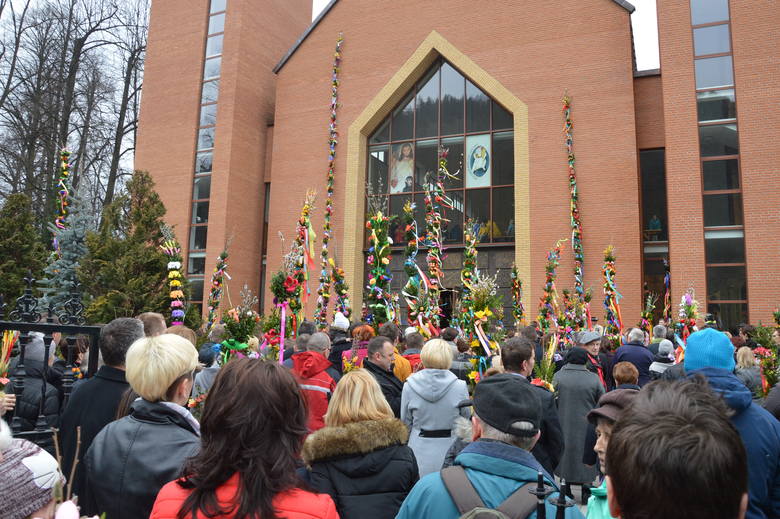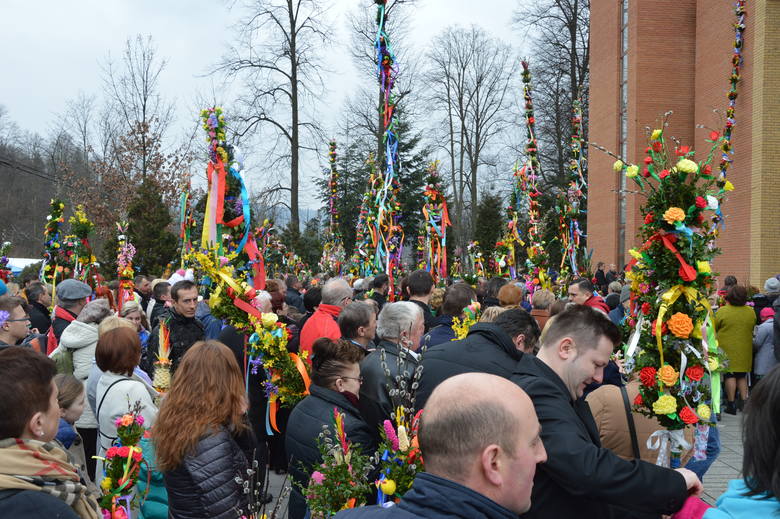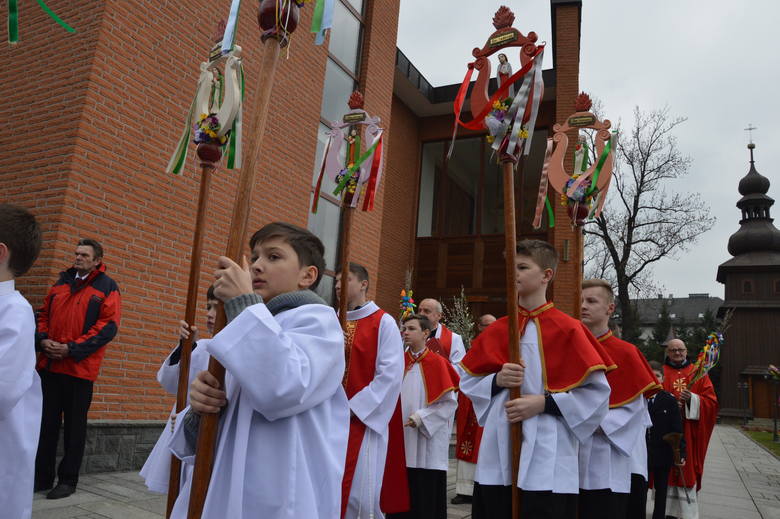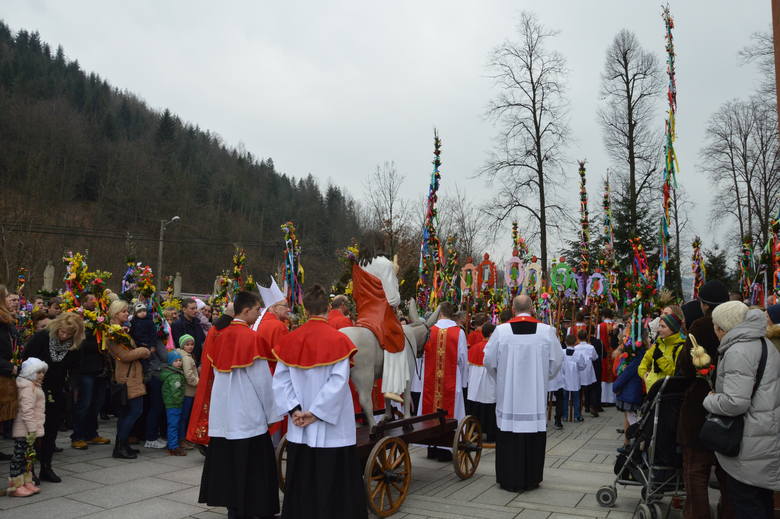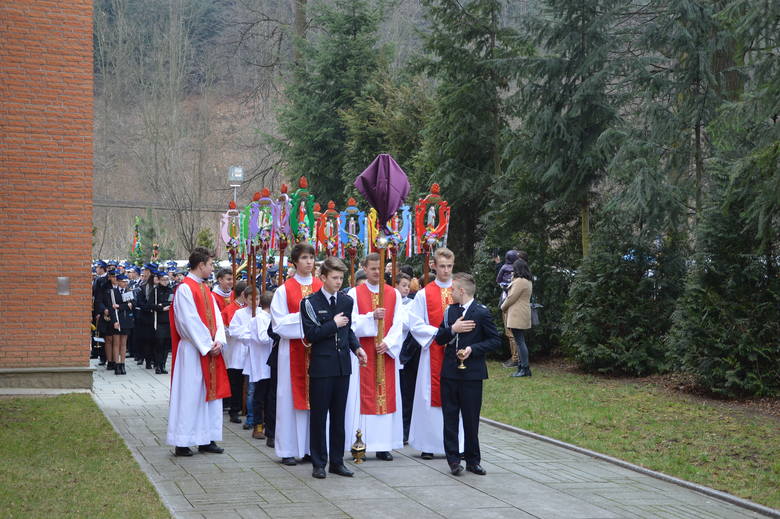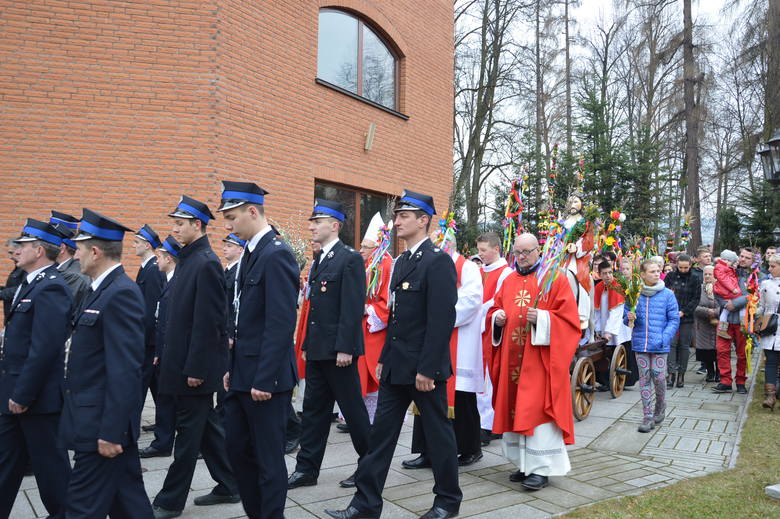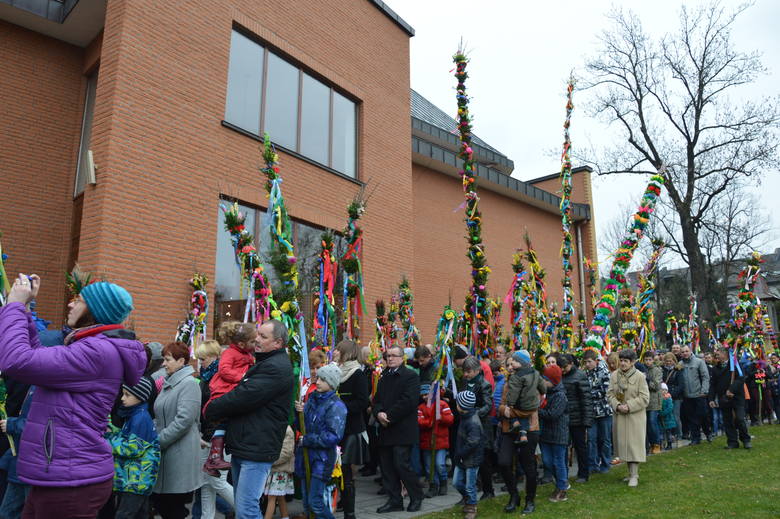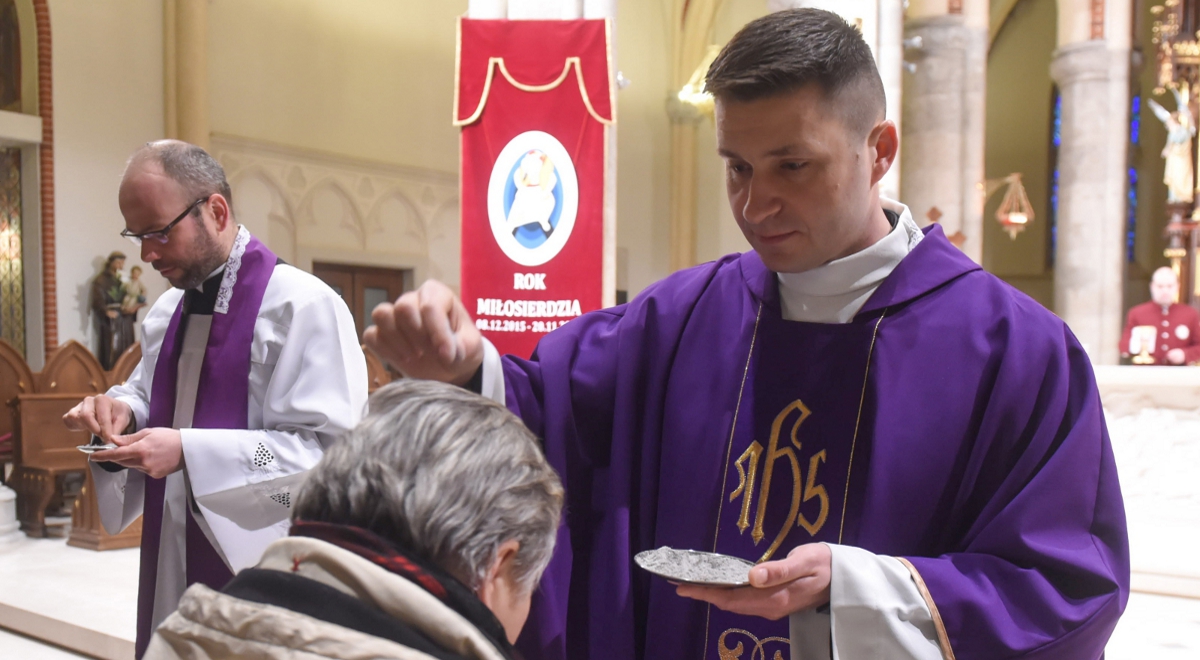Post by Bonobo on Mar 28, 2010 19:35:42 GMT 1
Today is Palm Sunday.
Many Poles are deeply religious. The most common denomination is Roman Catholicism. Polish catholics have retained customs and traditions which have already disappeared in European countries.
Palm Sunday is a Christian moveable feast which always falls on the Sunday before Easter Sunday. The feast commemorates an event mentioned by all four Canonical Gospels Mark 11:1-11, Matthew 21:1-11, Luke 19:28-44, and John 12:12-19: the triumphant entry of Jesus into Jerusalem in the days before his Passion. It is also called Passion Sunday or Palm Sunday of the Lord's Passion.
In many Christian churches, Palm Sunday is marked by the distribution of palm leaves (often tied into crosses) to the assembled worshipers. The difficulty of procuring palms for that day's ceremonies in unfavorable climates for palms led to the substitution of boughs of box, yew, willow or other native trees. The Sunday was often designated by the names of these trees, as Yew Sunday or by the general term Branch Sunday.
On Palm Sunday, in the Roman Catholic Church, as well as many Anglican and Lutheran churches, palm fronds (or in colder climates some kind of substitutes) are blessed with an aspergilium outside the church building (or in cold climates in the narthex when Easter falls early in the year). A procession also takes place. It may include the normal liturgical procession of clergy and acolytes, the parish choir, the children of the parish or indeed the entire congregation as in the churches of the East. In Oriental Orthodox churches palm fronds are distributed at the front of the church at the sanctuary steps, in India the sanctuary itself having been strewn with marigolds, and the congregation processes through and outside the church. In many Protestant churches, children are given palms, and then walk in procession around the inside of the church while the adults remain seated.
Many Polish towns and villages (the best known are Lipnica Murowana in Małopolska and Łyse in Podlasie) organize artificial palm competitions. The biggest of those reach above 30 meters in length; for example, the highest palm in 2008 had 33.39 meters.
Read more
en.wikipedia.org/wiki/Palm_Sunday
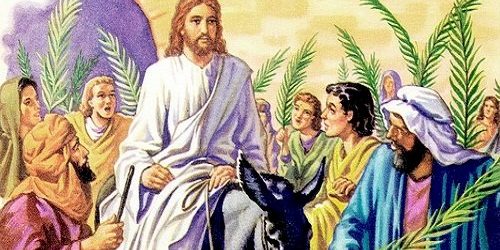
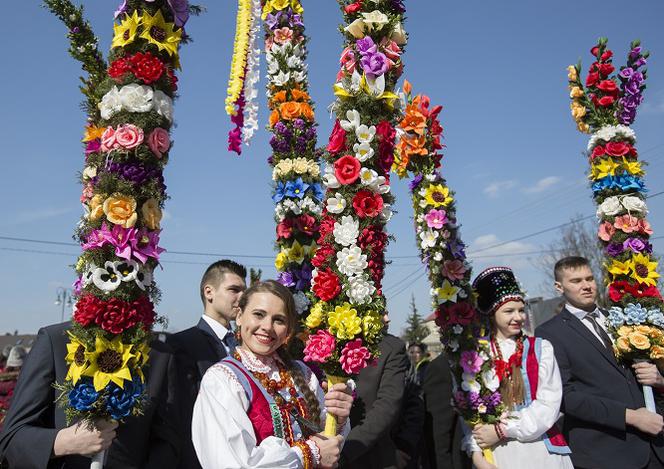
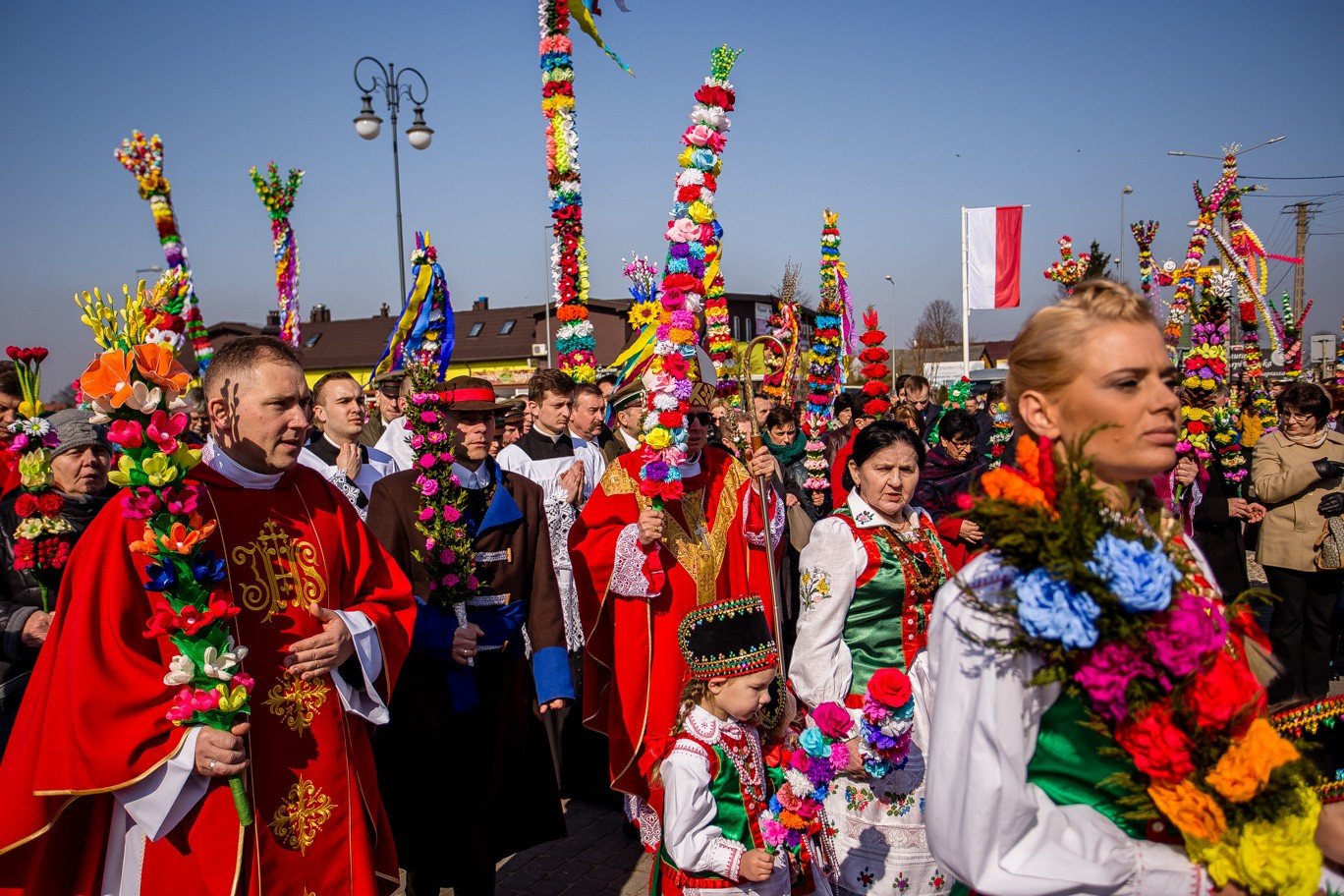
Many Poles are deeply religious. The most common denomination is Roman Catholicism. Polish catholics have retained customs and traditions which have already disappeared in European countries.
Palm Sunday is a Christian moveable feast which always falls on the Sunday before Easter Sunday. The feast commemorates an event mentioned by all four Canonical Gospels Mark 11:1-11, Matthew 21:1-11, Luke 19:28-44, and John 12:12-19: the triumphant entry of Jesus into Jerusalem in the days before his Passion. It is also called Passion Sunday or Palm Sunday of the Lord's Passion.
In many Christian churches, Palm Sunday is marked by the distribution of palm leaves (often tied into crosses) to the assembled worshipers. The difficulty of procuring palms for that day's ceremonies in unfavorable climates for palms led to the substitution of boughs of box, yew, willow or other native trees. The Sunday was often designated by the names of these trees, as Yew Sunday or by the general term Branch Sunday.
On Palm Sunday, in the Roman Catholic Church, as well as many Anglican and Lutheran churches, palm fronds (or in colder climates some kind of substitutes) are blessed with an aspergilium outside the church building (or in cold climates in the narthex when Easter falls early in the year). A procession also takes place. It may include the normal liturgical procession of clergy and acolytes, the parish choir, the children of the parish or indeed the entire congregation as in the churches of the East. In Oriental Orthodox churches palm fronds are distributed at the front of the church at the sanctuary steps, in India the sanctuary itself having been strewn with marigolds, and the congregation processes through and outside the church. In many Protestant churches, children are given palms, and then walk in procession around the inside of the church while the adults remain seated.
Many Polish towns and villages (the best known are Lipnica Murowana in Małopolska and Łyse in Podlasie) organize artificial palm competitions. The biggest of those reach above 30 meters in length; for example, the highest palm in 2008 had 33.39 meters.
Read more
en.wikipedia.org/wiki/Palm_Sunday










